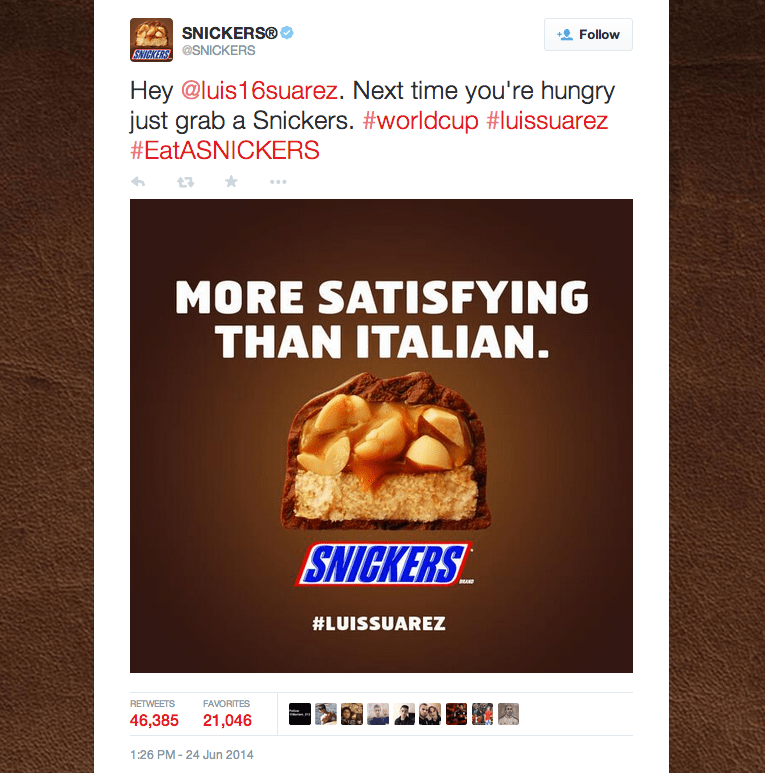Digital Marketing Glossary
Knowledge of terminology is one of the first steps in any field. That’s why we have prepared this Digital Marketing Glossary, so that all those who want to sail digital waters, regardless of which side of the task they are on, have in one place the basic concepts they will encounter in their daily work.
Let’s start from the beginning and the very concept of Marketing, which was explained in a simple way by the father of modern marketing – Philip Kotler
It is the “the science and art of researching, creating and delivering value to meet the needs of the target market, while making a profit. Marketing recognizes unmet needs and desires. It defines, measures and quantifies market size and potential profit. It indicates which parts of the market the company can best satisfy, and on that basis creates and promotes appropriate products and services. ”
So, in order to be successful in marketing, it is necessary to know our product very well, to be honest and tell ourselves – whether it meets the needs of our target group. If so, then it is important what kind of messages we will create and where we will share them in order to reach our customers.
Regarding this, we have two major approaches in marketing, Brand Marketing and Performance Marketing. Brand Marketing is the foundation. It’s task is to build a reputation and position the image of the company or product. On the other hand, Performance Marketing is based on concrete performance, effects, sales. Practically, they can’t function without each other. A brand without performance would be just a nice story without profit, and a performance without story and context would be just a boring ad.
Advertising is a narrower term than Marketing and represents an aspect of promotion from the well-known 4P model: Product, Price, Place, Promotion. In other words, Advertising refers to Paid Advertising. So Advertising is not the same as Marketing, although many equate them.
The Strategy represents the plan and steps by which we reach the goal. If we talk about the Strategy of online communication, it answers the question: How do we get from the current state we are in to the desired state? In what way, through which channels, to which target group to convey the necessary information?
There are several types of strategies, such as, the already mentioned Digital Strategy or Online Communication Strategy, then Brand Strategy, Content Strategy and many others.
The Integrated Campaign is implemented through several different online and offline channels and should give the impression that it is the same campaign. For example, we have launched a new mascara, so a video ad with visible effects of use will appear on TV and YouTube, at the same time a jingle will be played on the radio, a picture of that mascara with a model with large lashes will be on a billboard, on social networks, we will organize a photo contest for who has the most beautiful eyelashes, while we will give beauty bloggers mascara as a gift to use, record and comment on while applying it.
KPI is an acronym for Key Performance Indicator. KPIs are our main indicators of the performance of a campaign or an action. That is why it is very important to define them in advance so that we can more easily measure where we are in relation to the goal. For example – if our goal is brand awareness, that is, to get as many people as possible to see our message, then the KPI will be the number of Ad Impressions, which we can track within the advertising platforms. It would also be desirable to quantify the KPI and say: at the end of the month we should have 1,000,000 impressions, and we will measure day by day where we are in relation to the set KPI and react accordingly.
In addition to Impressions, which indicate the number of times our ads are displayed, we also have Reach, which means the number of people who saw our ad. In other words, if our ad has achieved 1,000 impressions and has a reach of 500, that means that on average one person has seen the ad 2 times.
CPC is an acronym for Cost per Click and represents cost per click. We also have CPM or Cost per Mile, which means a price per thousand impressions. If, for example, our campaign had a CPC of 0.05 euro cents, that means that each click on the ad cost us an average of 5 cents. And, if our CPM was 20 EUR, it means that 20 EUR cost us 1,000 ad views, or 0.02 EUR cents cost us one ad view. Both CPC and CPM can be our KPIs and aim to be as low as possible over time, that is, to pay for clicks and views as little as possible, or to get as many clicks and impressions as possible for the same budget.
Awareness is a term often used with the phrase brand awareness and represents one of the goals of building a brand that indicates how recognizable the brand is to other people. Brand awareness is often set as a goal when a brand is new or insufficiently known, so we need to design activities that will increase its visibility. Commonly used KPIs in digital campaigns to measure awareness are impressions.
Engagement involves the interaction between the brand and the user in order to establish a long-term relationship and increase the brand’s impact on the user. In digital marketing, the term has grown, so the engagement represents likes, comments, shares, clicks, video views when consuming content on networks.
A Conversion is a targeted action that we want our user to take in order to meet the goal we have set. In other words, it is a situation in which the recipient of the message or the consumer of the content performs the desired action. This desired action can be e.g. online sales, and it can be set up differently, so it can be subscribing to our newsletter, downloading a document, calling a phone number, watching a video and the like. We can also measure the success of the conversion through the Conversion Rate we get by dividing the number of conversions by the number of visitors and multiplying by 100. For example, we had 50 sales on a site visited by 200 people, and our conversion rate will be 25%. And that can be our KPI, so we can follow the conversion rate from month to month.
In connection with conversions, we have a CTA – a call to action. A call to action is a short, direct sentence or phrase that leads a user to a conversion. CTA can be placed as a linked part of the text or more effectively, as a button on which it can be written: find out more, read more, download a brochure, schedule a consultation, book an appointment, buy, order…
WOM – another acronym that represents the Word of Mouth promotion. It represents a situation in which the user praises us and recommends us to others. It is a form of free marketing, which we deserve because we met the user’s expectations, provide a good experience or some added value. In digital, WOM has been given another form in the form of UGC (user generated content), which is content created by users and shared through their private accounts on social networks. These can be pictures from a bar, a nicely decorated dish from a restaurant, a piece of clothing that we like and the like. Even if users tagged and praised us, and we didn’t ask them to do so, we got free advertising 🙂 It wouldn’t be bad to at least thank them or share their content with us.
Remarketing is an activity that has the task of reminding us to perform a certain action (e.g. complete a purchase, revisit the site, read another text we posted, watch a new video…) They are most often displayed in the form of ads that appear after you close to the conversion, so the message itself should be tailored to encourage the person to finish what they started. Therefore, she can be offered an additional discount, something exclusive and the like.
Inbound marketing are activities that we carry out in order to attract people to perform the conversion. These are the so-called pull methods, within which we create attractive and useful content that targets a smaller, higher quality target group that will be interested in that content (e.g. educational blog posts). On the other hand, we have Outbound marketing that uses the so-called push methods, e.g. targets a large number of people and goes to quantity (this activity includes paid advertising).
Lead in marketing is a potential sales contact that we reach through various push or pull methods. The activity aimed at collecting leads is also called lead generation. Leads are most often phone numbers or e-mail addresses with which we further place messages in order to warm them up and nurture them (so-called lead nurturing) and bring them closer to shopping. These activities are part of the sales funnel, which we will now define.
Sales funnel or sales funnel are the stages that a user or leader goes through in order to get closer to the goal. Most often it is a sale. It usually starts wide from awareness so it narrows down until the moment of conversion. Similar to the funnel, there is a
Customer Journey, that is, a journey that consists of key points and experiences that a person goes through when making a decision to buy something. Synonyms for customer journey are both Buyer Journey and User Journey.
A User Experience is an experience that a user experiences during a process. It is often linked to the sales funnel, and answers the question – what kind of experience does the user face when searching for us? Was it easy for him to find our site? If he came to the site, how he manages there, does he know where to go, what to click on to get the necessary information. There is a whole paradigm in web design called User Experience Design (UX) which is the process of creating products that provide a meaningful and relevant user experience.
Cookies are data from users’ devices that contain various information that can help us better understand user behavior on our website. These are information such as: devices and search engines used when visiting the site, where they came from on our website, then the length of the visit, user interests, intention to buy … Cookies also help us in remarketing activities, when their adequate number is collected. This information is anonymous and should not reveal anyone’s identity.
Which brings us to the GDPR, which is an acronym for the General Data Protection Regulation. In Serbian, it is called the General Regulation on Personal Data Protection and is a group of laws that regulates the manner of collecting, storing and processing personal data of users. It is very important to get to know him very well and implement him in your business, so it would be good to hire experts and lawyers to help you with that.
ROI is an acronym for return on investment. ROI compares the profit we made with the initial investment. In digital, it’s all easier, because everything is very measurable. For example: I invested 100 EUR in an ad on Facebook, and thanks to that ad, I sold something in the amount of 250 EUR. That means I have surplus of 150 EUR. The investment paid off for me, and I still made money.
SEO or Search Engine Optimization are unpaid methods and activities that are carried out in order to better rank our website in search engines for certain keywords. On the other hand, there are also paid PPC (so-called pay per click) methods of website promotion on search engines. Both paid and unpaid methods of website promotion belong to the so-called. SEM, or Search Engine Marketing activities.
B2B is a business-to-business paradigm, which represents a situation where we are a company and have a product or service that benefits another company. Also, we have a B2C situation, ie business-to-customer, which means that our product or service goes to the end user, ie the customer. Depending on the paradigm, the approach and channels change. For example. if we are a manufacturer of washing powder, our B2B approach will go to wholesalers and retailers, and B2C to customers and consumers of powder.
Niche is a narrower term than the market and refers to narrowly defined and specialized target groups. If our market is represented by mothers who have recently given birth, the niche would be mothers who use supplementary feeding. There is also a narrower term than niches, and those are micro-niches, and these would be, in this example, mothers who use complementary foods of exclusively organic origin. The smaller the market, the less meaningful the niches are, but sometimes it happens that we “sting” a niche that has great potential for purchase.
A / B testing is used when we are not sure what the effects of an action will be on digital. For example: we are not sure whether our audience will prefer a monochromatic or color photo? Then we can do 2 versions of the ad: one with a black and white image and one in color, but the text should be the same. We will give the same budget to both ads and place it on the same target group. An ad that has better performance (e.g. more likes) in A / B testing can help us decide what content to do next.
Viral is extremely good and interesting content that is shared a lot on social networks because people really liked it. Most often, such content occur spontaneously, so if they have viral potential, they will spread very quickly. The viral content can hardly be planned, because the charm is in its spontaneity. A great reason for viral content are often some events that came up and that inspired users and brands to react to them on social networks. If brands are the initiators of these reactions, it is called Reactive
Advertising in marketing and very often these reactions in the form of posts on social networks go viral. In the picture on the screen you can see an example of a viral post – when Suarez bit Chiellini at the World Cup, Snickers reacted great and made a post alluding to their campaign When You’re Hungry You’re Not All Yourself.
 Izvor: Telegram.hr
Izvor: Telegram.hr

Izvor: Twitter
Meme is content that is reproduced in different ways, and its basis is the same. That basis was usually some kind of viral content first, and memes are its extension and can be created by any of us. Here is an example in the picture.
 Source: Wikipedia
Source: Wikipedia
 Source: Pinterest
Source: Pinterest
It all started with one photo of a child and then very quickly people started reproducing it in different ways.
Growth Hacking is an alternative method and activity that aims to reach a larger number of customers. It usually does not involve classic advertising methods, but requires thinking outside the box and a good knowledge of the product and the target group. One great example of Growth hacking is Uber, which introduced a free ride as bait so that users who already ride Uber get a free ride for every new user they bring. And a new user also gets a free ride. And so on. Their sales jumped.
Organic Results – these are the results we have achieved without paying for it. They are most often the result of good and adequate content that we have created for our target group. On the other hand, we have Paid Results.
We hope you found the explanations useful. If you want to master digital marketing at the operational, managerial or professional level or in the field of communication strategy or advertising – we invite you to explore the Homepage Academy courses.



